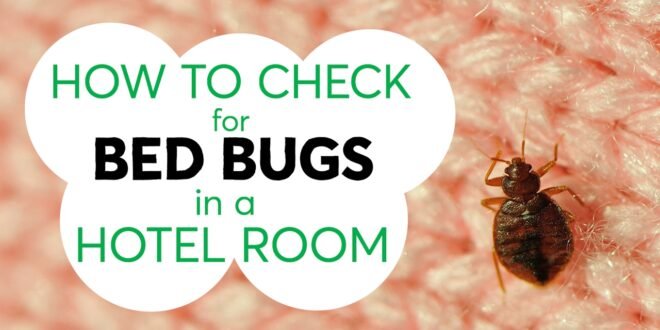Bed bugs are one of the most common yet distressing pests found in living spaces worldwide. These tiny, elusive insects can cause a significant amount of discomfort and health issues. Understanding how to check for bed bugs effectively is crucial for maintaining a clean, healthy, and pest-free environment. This comprehensive guide aims to arm you with the knowledge and tools necessary to detect, identify, and address bed bug infestations.
Understanding Bed Bugs
Before delving into the detection methods, it’s essential to understand what bed bugs are and why they are a concern. Bed bugs (Cimex lectularius) are small, nocturnal insects that feed on human blood. They are adept at hiding, making them hard to spot and eradicate. Bed bugs are not known to transmit diseases, but their bites can cause itching, allergic reactions, and sleep disturbances.
Signs of Bed Bug Presence
The first step in checking for bed bugs is recognizing the signs of their presence. Bed bugs leave several indicators, including:
- Bites on the Skin: Often the first sign of a bed bug infestation is bites that appear on the body, usually in a line or small cluster. These bites can be itchy and may cause discomfort.
- Blood Stains: Small blood spots on your sheets or pillowcases can indicate bed bugs have been feeding.
- Excrement Spots: Look for small, dark spots on your bedding, mattress, and nearby furniture, which could be bed bug excrement.
- Eggs and Shells: Tiny, pale eggs or eggshells around your sleeping area are a sign of a growing infestation.
- Live Bed Bugs: Although bed bugs are excellent at hiding, seeing live or dead bed bugs is a definitive sign of an infestation.
Step-by-Step Guide to Checking for Bed Bugs
Inspect Your Bed
Start with your bed, as it’s the most common place to find bed bugs. Strip your bedding and inspect it thoroughly for blood spots, fecal stains, and live insects. Pay close attention to seams, tags, and edges of the mattress and box spring. Using a flashlight can help you spot these elusive pests in dimly lit areas.
Examine Surrounding Furniture
Bed bugs can hide in furniture close to your bed. Inspect nightstands, dressers, and other bedroom furniture. Remove drawers and examine them inside and out. Look for the signs of bed bugs mentioned earlier, focusing on cracks, crevices, and joints in the furniture.
Check Wall Fixtures and Other Areas
Bed bugs can also reside in wall fixtures, electrical outlets, behind wallpaper, and in other less obvious places. Carefully inspect any wall-mounted items, including picture frames and light switches. Check the edges of carpeting and baseboards as well.
Use Bed Bug Traps
Bed bug traps, also known as interceptors, can be placed under the legs of your bed and other furniture. These traps can catch bed bugs attempting to climb up or down from your bed, providing evidence of their presence.
Professional Inspection
If you suspect a bed bug infestation but cannot find evidence yourself, it may be wise to hire a professional pest control service. Experienced professionals can conduct a more thorough inspection and confirm whether bed bugs are present.
Preventing Bed Bug Infestations
Prevention is key to avoiding bed bug infestations. Here are some tips:
- Regular Inspection: Regularly check your sleeping area and furniture for signs of bed bugs, especially after traveling.
- Maintain Cleanliness: Vacuum your living spaces frequently and declutter to reduce hiding spots for bed bugs.
- Be Cautious When Traveling: Always inspect hotel rooms for bed bugs and avoid placing luggage on the bed.
- Use Protective Covers: Encase your mattress and box spring in bed bug-proof covers to prevent infestations.
Conclusion
Detecting bed bugs early is essential for controlling and eradicating infestations before they spread. By following the detailed steps outlined in this guide, you can effectively check for bed bugs and take action to maintain a clean and healthy living environment. Remember, if you find evidence of bed bugs or if an infestation persists despite your efforts, seeking professional pest control services is the best course of action to ensure your home becomes bed bug-free.
By arming yourself with knowledge and remaining vigilant, you can protect your home from the nuisance of bed bugs and ensure peaceful, uninterrupted sleep.
Read Also: How to Cook Corn on the Cob: A Comprehensive Guide
 Inspirescroll
Inspirescroll




